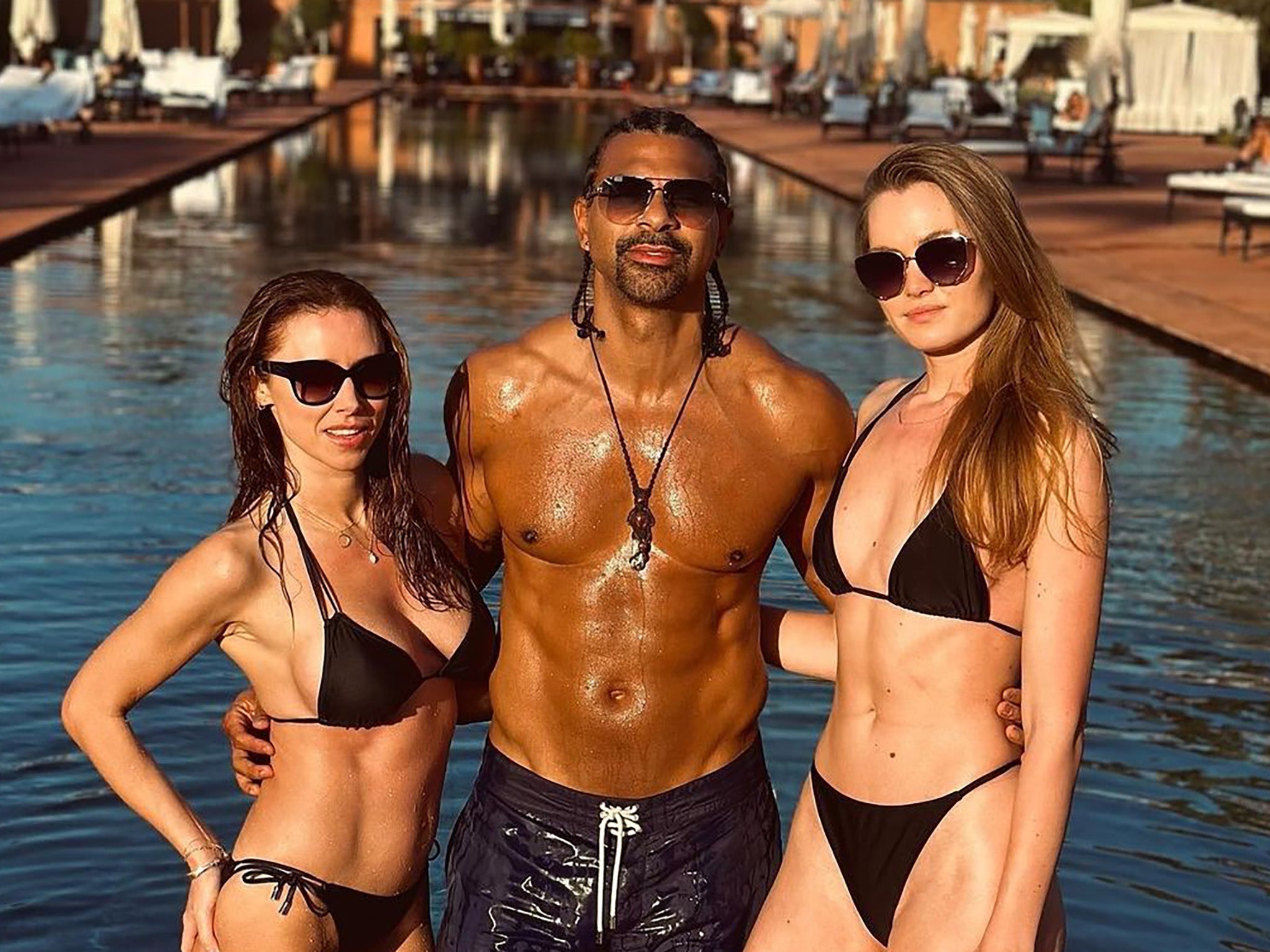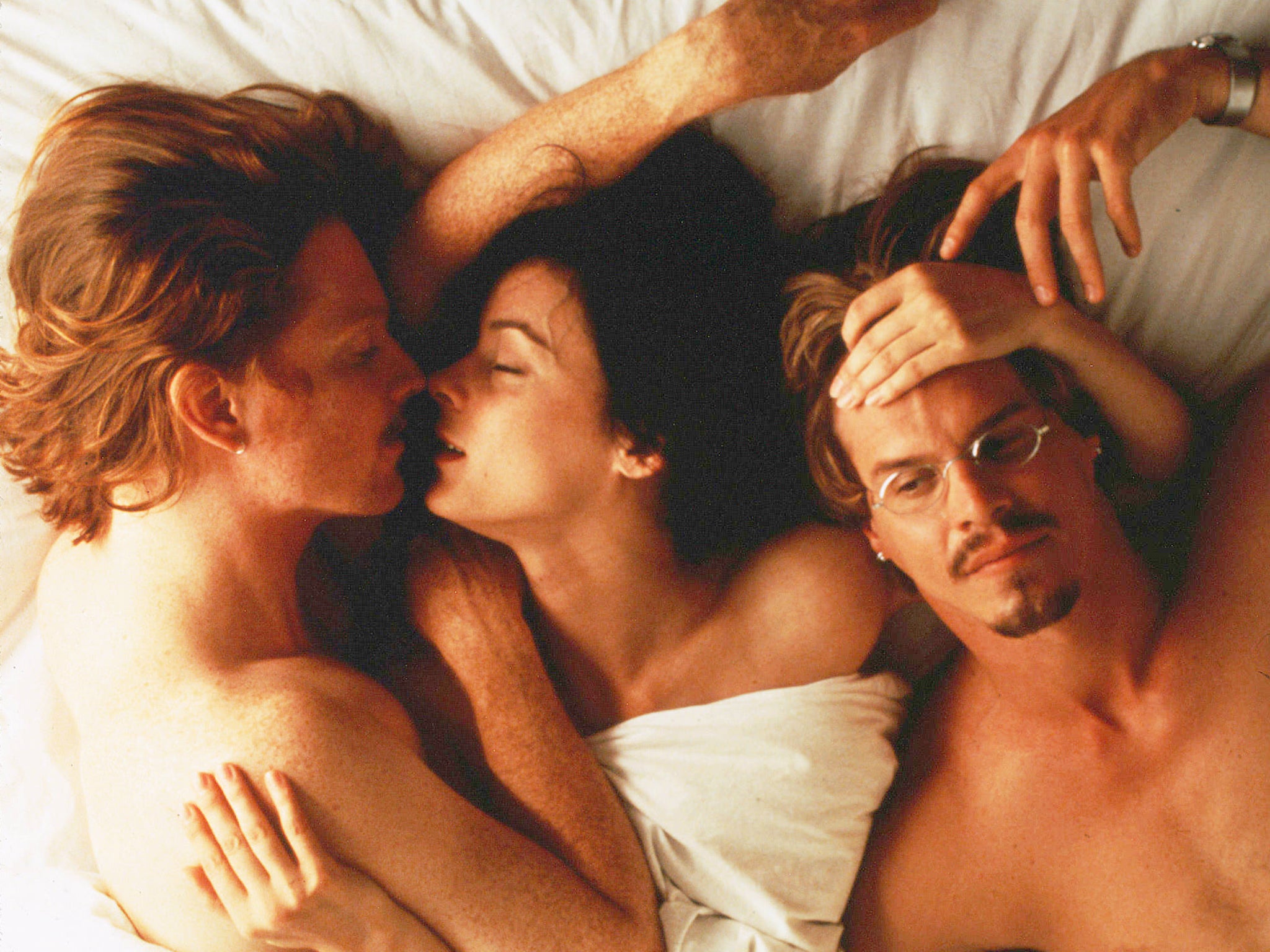As David Haye teases that he’s in one, we ask: can throuples really work?
Selena Gomez, Brooklyn Beckham and Nicola Peltz have joked about being in one. David Haye, Una Healy and Sian Osborne actually might be. Throuples, or ‘triad’ relationships, are having a moment, and Matthew Neale has unpacked the highs, lows and tedious clichés that surround them

Call us a throuple,” Selena Gomez recently captioned an Instagram photo showing her embracing Brooklyn Beckham and his wife Nicola Peltz. She was apparently joking, but that’s perhaps part of the problem. While various celebrities seem to be vaguely alluding to polyamory lately, everyone’s being decidedly coy about coming right out and talking about it.
So while the word “throuple” may be having a moment – additionally driven by speculation about the romantic lives of boxer David Haye, singer Una Healy and model Sian Osborne – the internet, as usual, has become terribly excited about something that’s been going on for as long as people have been curious and horny. Even the phrase “ménage à trois”, commonly deployed as a synonym for sex between three people, actually translates more closely to “household of three”: a domestic set-up built around an established three-way relationship, traditionally even involving vows, rather than a brief encounter.
It’s also worth noting that there are countless different ways a triad can look. Grace, a 41-year-old civil servant from Bristol, recalls her first throuple experience being a bit of an accident. “We had some really good times and there was genuine desire and intent between both my partners to be together as well as with me, but they were both quite shy with each other and their relationship went slowly,” she explains.
Eventually one of the partners went back to university, met someone new, and decided to give monogamy another go. “That’s almost 20 years ago now,” she says. “It’s sweet that all three of us are still around and friends, and we’ve all come out as trans.” After a second triad that was marred by dishonesty, Grace has been in another two since, and looks back fondly on “some really warm (and hot) memories” of those relationships.
Many of the hierarchical problems that arise in throuples, though, are down to the way they’re formed: often an established couple who then meet a “third”, with all the problems that arise from that kind of language.
“If two people out of three had a pre-existing relationship that was already well established, those two people have couple’s privilege,” Grace explains, adding that it can impact everything – from “big decisions [that] always prioritise the stability of one of the relationships in the triad, to small things like language that minimises or separates the most recent partner.” Saying to the newest partner “Wanna come with us to the gig Friday night?”, or even “We love you, we’re so happy we met you” reinforces an unequal “us” and “you” dynamic that can lead to pain in the long term.
Winter, a 28-year-old from Bristol, says it’s not an uncommon set-up: all her throuple experiences were with herself, the same established partner, and a third. “My aim was always to create distinct and separate relationships between each of us, thinking of it as three pairs rather than one throuple,” she says. “That didn’t mean we didn’t hang out as a three sometimes – or even most of the time – but I felt the frame-of-mind was important to how things were viewed.”
Although Winter says she didn’t struggle with finding parity within the triad, there were certainly pitfalls elsewhere: “What I did find caused issues was that eventually one of the pairs weakened and broke, sometimes leaving an uncomfortable hinge in the middle. I think if I were part of a throuple where none of us lived together, that would be more amicable to me. It would allow an easier distinction.”
While it’s great to see more conversations being had around ethical non-monogamy, there’s also a keen awareness among everyone I spoke to that media representation is usually a massive let-down. Anne Hodder-Smith, a sex expert based in the US, says that the well-worn cliché of one man and two women enjoying a string of threesomes is a cis-normative trope that very rarely reflects reality.
Stop using the word ‘third’. Nothing says you want to devalue a human being by adding them onto your relationship like that word
“Because of the patriarchy there’s the assumption that sex is for the man, that sex is penis-centred, and that everything else is extra,” they tell me. “So there’s this combination of male entitlement and this idea that it’s women’s obligation to service that entitled man. Partly because we’re culturally monogamous, there’s this assumption that there are ‘safe’ or ‘OK’ groups of three: two women and a man. Heaven forbid it’s two men and a woman, or two trans women and a cis dude.”
Not all triad relationships look identical in terms of gender and sex, and it’s also important to accept that not all individual relationships within a triad need to meet the same needs. In fact, it’s arguably better if they don’t: the assumption that one person should meet every single need in a person’s life is a hangover from monogamy that doesn’t need to be maintained in a throuple. It’s not just about sex, either; as Hodder-Smith says: “It might be playing Fortnite, it might be that someone wants to go clubbing on Fridays.”
The joy of having two or more partners is that they don’t both need to be ravers or gamers, in the same way that nobody expects their friends to all have identical shared interests. For people who land somewhere on the asexual spectrum, sex may be a very minor consideration, or entirely absent. For some celebrities, presumably having one partner who likes super-yachts and another who prefers to take the helicopter can mean a wealth of romantic opportunities.
Regardless of configuration, the question everyone usually wants to ask is: can it work? And if so, how can it work? For Grace, it comes back to recognising differences and making sure that privilege or hierarchy are being recognised and managed. “If you and an existing partner are considering a triad, take great care to be aware of the privilege you have as a pre-existing relationship,” she says. “Give all of your partners the opportunity and love to express any feelings they might have about being undervalued or about feeling deprioritised.” She’s also keen to remind people that the way we love won’t look the same with every person, and to embrace the variety. “Also, stop using the word ‘third’. Nothing says you want to devalue a human being by adding them onto your relationship like that word.”
Winter also recommends taking time and allowing space for it to work. “Go slowly, and make sure everybody has figured each other out and the dynamic has reached stability before really committing to any labels,” she says. “This involves the general relationship advice of strong, open and honest communication from all parties, and turned up to 10. There’s no room for ‘ah f*** it, let’s go for it and see what happens’, because you have collateral.”

Whether you call yourself polyamorous, in an open relationship, monogamous, or whatever, it seems the key to success comes back to the same old factors: transparent, honest communication, and vulnerability. Maybe you’re not looking for a deep and meaningful connection. Maybe you just want a hot threesome. You’ll still benefit enormously from being open about what you want, and listening to what the others want, too.
“That’s a huge part of the success, and the number of partners involved isn’t really the clinching factor,” Hodder-Smith says. “Having more than one partner potentially makes it a little more work but I think that, regardless of the dynamic, success in a relationship is when each person has their own individual humanity and needs met.”
As with any intimate interpersonal reaction, it’s better to address conflict or tension head-on than keep it locked up. “It isn’t the absence of fights, or the absence of ‘I don’t know if I love you anymore’,” they say. “None of that is what success looks like. I think success is remembering why we have chosen that person. Recognising that there are other people in the world who could actually fulfil elements of your life or a partner’s life in ways that one or the other individually can’t. What would it look like to expand that opportunity?”
You don’t need to be living a wild celebrity lifestyle to take those chances.
Join our commenting forum
Join thought-provoking conversations, follow other Independent readers and see their replies
Comments


Bookmark popover
Removed from bookmarks